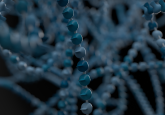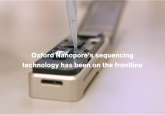Nanopore sequencing: how does it work?
Oxford Nanopore sequencing devices use flow cells that contain tiny holes – nanopores – embedded in an electro-resistant membrane. When DNA passes through a nanopore, the current is disrupted, producing a ‘squiggle’ that is specific to the particular base that has passed through in that moment. These squiggles can be decoded using basecalling algorithms to determine the DNA or RNA sequence in real time.
For more information, please visit the following resources and pages:
- How nanopore sequencing works
- Oxford Nanopore products
- MinION brochure – pocket-sized, USB-powered portable sequencing





